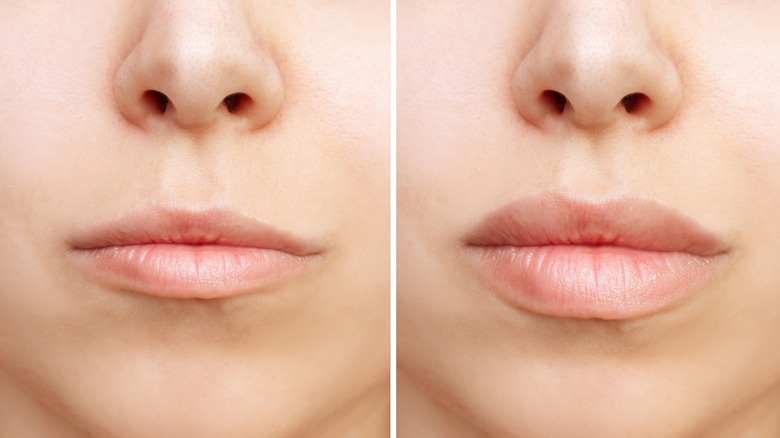Introduction
The sun care industry is evolving from seasonal to year-round essential in beauty and personal care. As consumers increasingly prioritize skin health and embrace innovative products, the traditional notions of sun protection are evolving. From the “skinification” trend, where sun care merges seamlessly with skincare, to a growing demand for eco-friendly formulas, the landscape is dynamic. In this exploration, we delve into the latest trends uncovered in articles exploring sunscreen production, the soaring popularity of sun care, and insights on preparing for the next summer season. Unveiling strategies and innovations, this journey promises a glimpse into the future of sun care.
Outline
- The Evolving Landscape of Sun Care
- Navigating SPF Considerations and Innovations
- Strategies for the Next Summer Season
- Conclusion
The Evolving Landscape of Sun Care
Amidst the sun-soaked shifts in consumer behavior and beauty preferences, the sun care industry is navigating a transformative journey. No longer confined to a seasonal affair, sunscreen has become a year-round necessity, driven by changing habits and government-backed awareness campaigns. The “skinification” trend is at the forefront, redefining sun care as more than a protective layer. Consumers now seek products that seamlessly blend SPF with skincare benefits, introducing playful textures and supplementary advantages beyond mere sun protection.
Echoing the global call for environmental responsibility, the industry is embracing eco-friendly formulas and sustainable practices. TY Cosmetic, the leading OEM Cosmetic Manufacturer, is at the forefront of this shift. Consumers, ever more conscious of their impact, are steering towards ocean-friendly, biodegradable options. This paradigm shift not only aligns with ethical consumerism but also challenges manufacturers to explore innovative solutions that prioritize both skin health and the planet.
In the SPF dilemma, where higher levels are sought, education becomes paramount. The emphasis on strong sun protection must include proper usage awareness beyond SPF numbers. UV protection is vital for preventing cancer, premature aging, pigmentation, and immune harm. Antioxidants such as vitamins C and E, and compounds like resveratrol, are crucial additions to sun care products for stability and enhanced protection.
Debating physical versus chemical sunscreens highlights changing regulations and innovation in sun care. This dynamic shapes a holistic future of protection.
Navigating SPF Considerations and Innovations
Consumers face the SPF dilemma, balancing higher levels with proper usage to shield against sun exposure risk However, beyond the numerical value, education becomes the linchpin. Brands must empower consumers with insights into the application amount, frequency, and techniques to ensure effective sun defense without falling prey to a false sense of invincibility.
Simultaneously, the spotlight on UV protection extends beyond the traditional realms of cancer prevention. UV rays, notorious for triggering premature skin aging, pigmentation issues, and immune disruption, demand a more nuanced approach. Enter antioxidants – the unsung heroes in the sun care narrative. Compounds like vitamin C, vitamin E, and resveratrol are gaining prominence for their ability to neutralize reactive oxygen species (ROS), the skin-damaging molecules generated by UV rays. Their inclusion not only bolsters the stability of sun care products but also enhances their overall photoprotective capabilities.
Yet, amidst this quest for innovation, the sun care industry grapples with the enduring debate surrounding physical versus chemical sunscreens. Each variant brings its merits and drawbacks, complicating the choice for manufacturers. Chemical sunscreens, absorbing UV rays and releasing them as heat, offer lightweight formulas ideal for daily wear. In contrast, physical sunscreens, employing minerals like titanium dioxide and zinc oxide, sit on the skin’s surface, reflecting sunlight. Navigating a complex global regulatory landscape to balance options is crucial, steering sun protection to a future blending science and skincare artistry.
Strategies for the Next Summer Season
Looking ahead to the next summer season, sun care brands must adopt strategic approaches that resonate with evolving consumer needs and industry dynamics. Innovation stands as a cornerstone, urging brands to reimagine sun care formulations for a multi-functional experience. Convenient powder sunscreens offer quick, delightful protection with lightweight, non-greasy, invisible finishes.
Customization emerges as a pivotal strategy, recognizing the diversity in consumer segments. Tailoring sun care products for specific demographics, such as children, involves the development of safe formulations and consideration of effective delivery methods. Research emphasizing the superiority of pump dispensers or squeeze bottles for children’s sunscreen underscores the importance of formulation and delivery.
Global market opportunities beckon, especially in the burgeoning Asia-Pacific region. Brands can capitalize on this by innovating products that bridge the gap between skincare and sun care. Understanding regional preferences, such as a demand for whitening, anti-aging, and skin-firming benefits, positions brands to thrive in this lucrative market.
Aligning with broader consumer trends, personalization, inclusivity, and sustainability must be at the forefront. TY Cosmetic offers inclusive products, prioritizing authenticity and sustainability. These pillars position brands to excel in the changing sun care industry.
Conclusion
In the midst of transformative shifts, the sun care industry emerges as a year-round essential, surpassing its seasonal roots. The “skinification” trend redefines sun care, blending protection with skincare benefits and eco-conscious formulas. The SPF dilemma highlights the importance of education alongside innovation, while antioxidants play a pivotal role in fortifying products against UV-induced skin issues.
Strategies for the next season pivot on innovation, customization, and global market exploration. TY Cosmetic, understands the pulse of this evolution. Brands must craft multi-functional formulations, cater to diverse consumer segments, and align with trends of personalization and sustainability. As we stand at the cusp of a sun care revolution, these strategies propel brands toward leadership in an industry where protection is an art form. The sun care revolution beckons, inviting brands to flourish in the ever-evolving tapestry of sun protection.
 Lifeyet News Lifeyet News
Lifeyet News Lifeyet News





